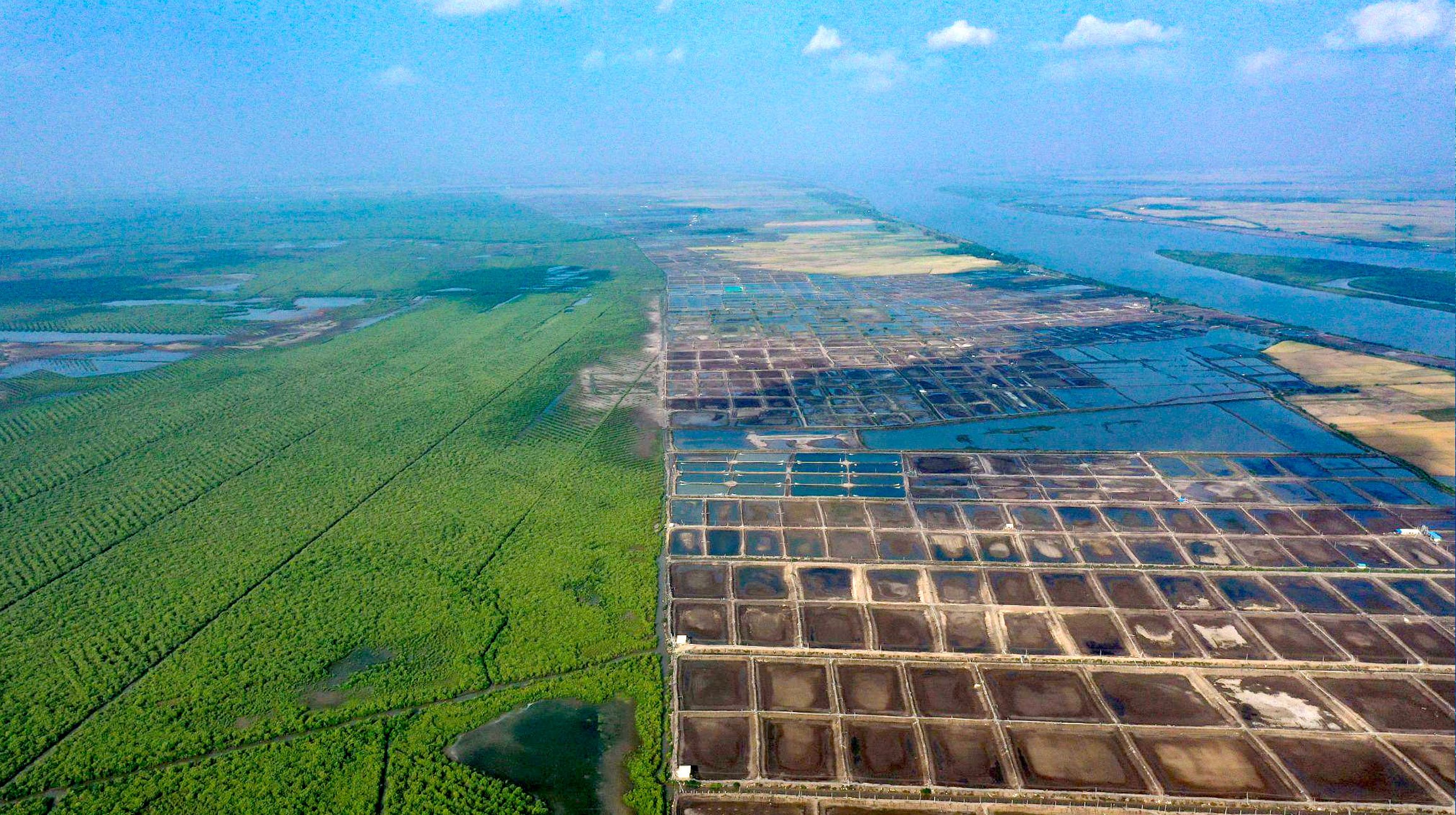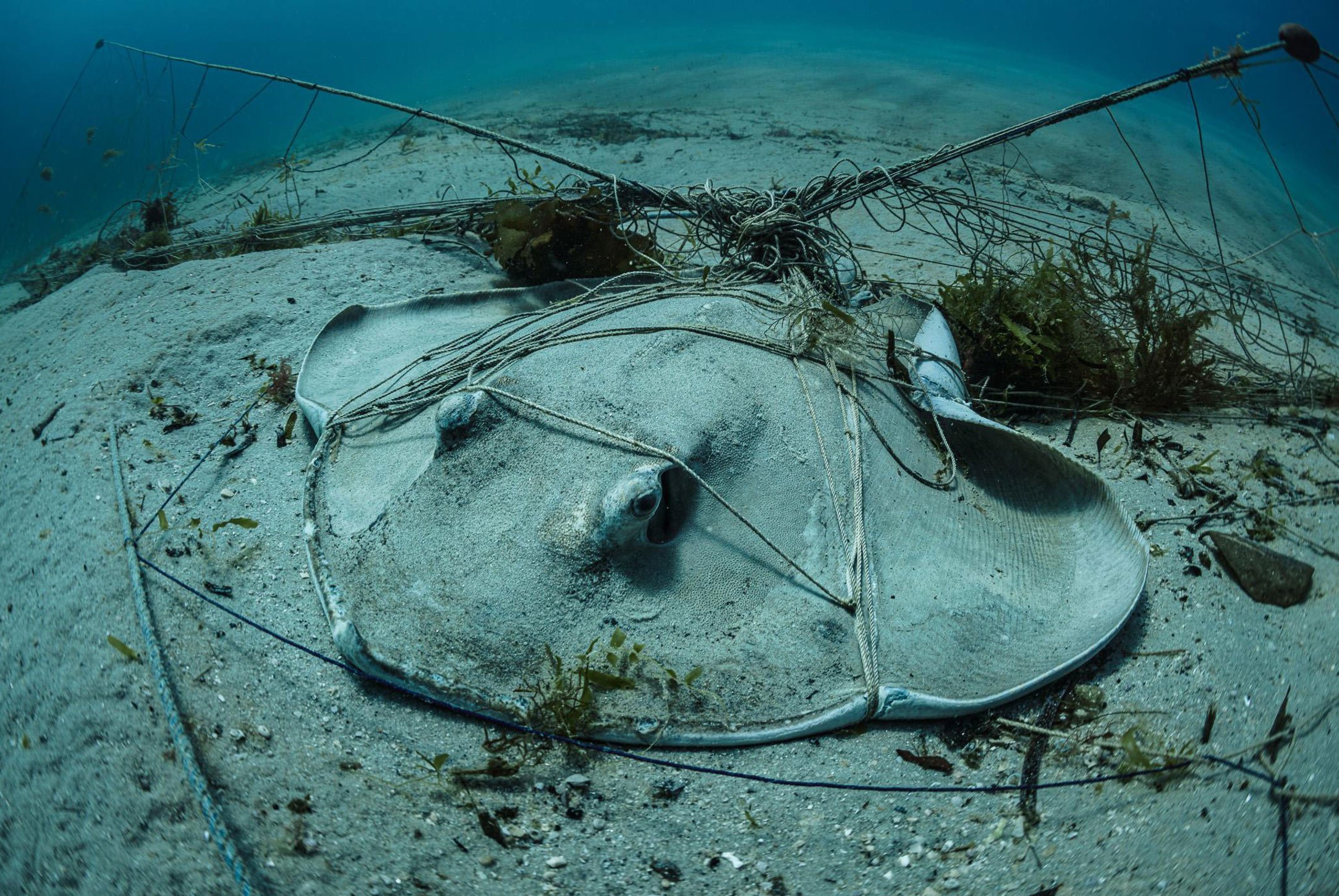Conservation.
Human Threats to Sharks and Rays
Many sharks and ray species are facing the grim reality of extinction, a crisis that stems directly from relentless human threats that include overfishing & bycatch, ocean pollution, climate change, tourism, and sever loss of habitat.
Written by MMF co-founder, Dr Simon Pierce for the United Nations Convention on the Conservation of Migratory Species of Wild Animals
CLIMATE
CHANGE
How Climate Change Impacts Sharks and Rays
How are rising ocean temperatures affecting shark and ray populations?
The ocean is like a giant heat sponge. It soaks up about 90% of the heat trapped on Earth. This is causing the surface of the sea to warm up, and as a result, some species of sharks are migrating to different parts of the world. For example, we're starting to see Whale Sharks in mainland Europe, Hammerhead and Bigeye Thresher Sharks in Britain, and Tiger Sharks off Canada and Tasmania. On the flip side, some tropical waters are getting too hot for sharks and rays, and species that prefer cooler waters are losing their homes.
Can marine ecosystems adapt to the rapid effects of climate change?
While some effects like changes in where sharks live are happening slowly, other changes are happening very quickly. Rising sea levels are flooding areas near the coast, there are more heatwaves in the ocean and more intense tropical storms, and we're seeing 'dead zones' where the water doesn't have enough oxygen for animals to survive. Also, the ocean is becoming more acidic, which is bad news for coral reefs. All of these things make life hard for sharks and rays, as well as for us humans.
Are sharks and rays vulnerable to climate change? Can they adapt?
Sharks and rays have been around for a long time. They've lived through several mass extinctions, which can give us clues about which species might be at risk from the changes we're causing. However, their current challenges are compounded by overfishing and habitat modification, which have already depleted shark populations.
OVERFISHING
How Overfishing Impacts Sharks and Rays
How does overfishing threaten sharks and rays?
Did you know that there are about 1,200 types of sharks, rays, and ghost sharks? Sadly, almost 400 of these species are in danger of extinction, mainly because of overfishing. In fact, overfishing has likely caused the total extinction of three types of sharks and rays and has led to many other species dying out in most areas where they used to live. All of the sharks and rays listed on the Convention on the Conservation of Migratory Species of Wild Animals (CMS) are in danger mainly because of overfishing.
How has fishing technology accelerated overfishing?
Although wild fisheries have been a vital protein source for millennia, catch rates have dramatically accelerated over the past century. That's thanks to things like motorized boats, bigger nets, and long fishing lines, as well as the ability to fish further offshore and sell fish all over the world.
Why do we catch so many sharks?
Every year, we catch about 1.5 million tonnes of sharks. We use different parts of the shark for different things: the fins, meat, liver oil, gill rakers (the parts of their gills that filter food), and skin. But it's not just people specifically fishing for sharks that's the problem. A lot of the time, sharks and rays get caught by accident in nets meant to catch other fish, like tuna.
What are the different types of fishing that impact sharks?
There are three main ways people catch sharks: recreational, artisanal, and industrial fishing. Recreational fishing is just for fun, while artisanal fishing is done by small boats in national waters, usually for less than a week at a time, and the fish are consumed locally or exported. Industrial fishing is done by larger, high-tech boats that are out for several days and are looking to sell their catch for a profit.
OCEAN
POLLUTION
How Ocean Pollution Impacts Sharks and Rays
Is ocean pollution getting worse?
Until the 1970s, people often dumped toxic waste into the ocean, thinking its huge size would spread out and weaken the harmful substances. But because we've been creating new types of chemicals and long-lasting materials like plastic, this problem has grown much worse for future generations.
What are the most common ocean pollutants?
The most common pollutants in the ocean are things like long-lasting organic pollutants, heavy metals, crude oil, and ocean garbage (like plastic waste and fishing gear that's been lost or thrown away). These pollutants can come from a lot of different places, such as runoff from farms and cities, waste from fishing and shipping boats, and even waste from the atmosphere that's carried by wind and dropped onto the surface of the ocean.
How are sharks and rays affected by ocean pollution?
Sharks and rays, which are some of the top predators in marine and freshwater ecosystems, are very susceptible to pollution. The harmful substances build up in their bodies faster than they can get rid of them. This problem gets worse when sharks eat prey that also have pollutants in their bodies. Then, when humans eat sharks and rays, those pollutants can get passed on to them.
TOURISM
How Tourism Impacts Sharks and Rays
How Is Shark Tourism Growing?
Shark tourism, which is about interacting with sharks and rays in their natural habitats, is becoming very popular. Every year, over a million people go on these tours, which focus on about 50 different species of sharks and rays in more than 40 countries.
What techniques are used to attract sharks?
Because many types of migratory sharks are becoming rarer due to overfishing and other human impacts, they tend to be cautious around unfamiliar surroundings. To make sure tourists can see them, operators often use techniques like feeding or other attraction methods. Alternatively, tourists might swim or dive with sharks at places they frequently visit, like feeding areas or cleaning stations.
What are the benefits and risks of shark tourism?
When done responsibly, shark tourism can provide benefits like economic development and increased legal protection for threatened species and their habitats. However, the quick growth of this industry can also disrupt shark behaviors, lead to more injuries for the sharks and rays involved, and damage their habitats.
HABITAT LOSS
How Habitat Loss Impacts Sharks and Rays
What challenges do diverse habitats present for sharks and rays?
Sharks and rays live in all kinds of marine and freshwater environments around the world, and there are more than 1,200 species, many of which we know little about. Humans have shared these coastal seas and freshwater habitats with sharks and rays for thousands of years. These habitats are essential for sharks and rays because they provide shelter, food, and places to reproduce.
How does human activity lead to habitat loss and degradation?
Habitat loss and degradation, which come from human activities like chopping down mangrove forests, building dams, and destroying coral with nets, can make ecosystems less resilient and productive. As the human population keeps growing and industries move into deeper waters, it's more important than ever to understand how these changes affect sharks and rays.
Funding for these fact sheets were provided by the government of Germany and the Principality of Monaco and with technical support from the Sharks MOU Advisory Committee.
The direct link to the original document, available in English, French, and Spanish, is here. Please note that the online text and imagery will likely have been altered from the original.








